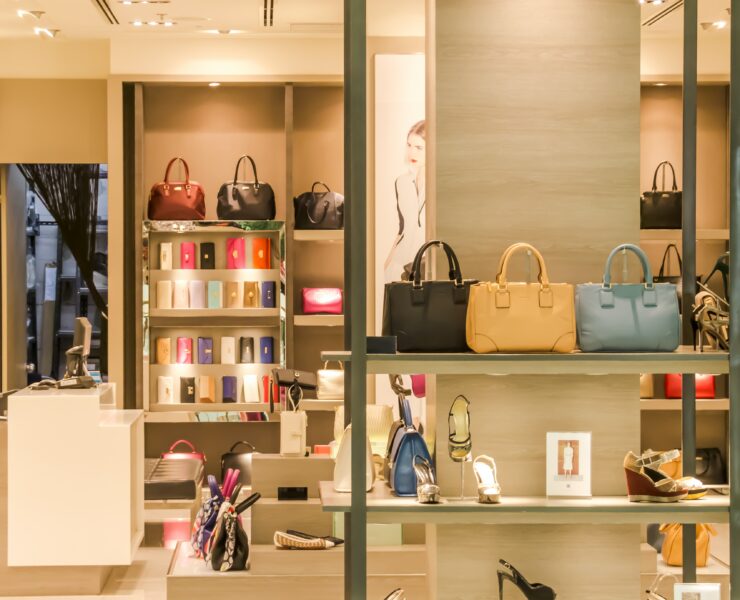Since the beginning of the “market” era, stores have always looked for ways to attract more clients. One powerful yet often overlooked method of achieving this is through in-store music, which plays a crucial role in creating a memorable shopping experience and boosting customer loyalty.
When it comes to engaging clients, brands tend to look for strategic spots where they can “leave their mark” inside their stores (either physical or online). This is done to align certain characteristics with their business so that clients can identify these attributes every time they are in the store. When we talk about “characteristics”, these include the colors they use, creative design, among other factors. However, one aspect that is very important and often overlooked is music! In-store music helps craft the overall ambiance that customers experience when they walk into your store.

Every brand has its own personality, and music is an essential aspect that’s supposed to reflect the brand’s vibe as well as the intended message that is to be communicated. This is where the term “in-store music” comes into the picture.
“In-store music” refers to the music that brands select to be played at their stores. The music should have specific relevance, which means that each song has to fit the brand’s particular style. For instance, if you are trying to sell exclusive couture clothing, there’s a huge chance that you won’t be playing “Another Brick in the Wall” by Pink Floyd. The music selection is expected to lean more towards classical music, or anything soft and elegant that reflects the kind of the items you’re trying to sell. Did you know that what you hear in a store is just as important as what you see? The two should always be in harmony with each other.
When designing a store environment, in-store music is a vital aspect to consider. The practice of designing store environments in a way that projects a certain image is known as atmospherics. This term was coined by business professor Philip Kotler in 1973.
According to him, the atmospherics not only helps to maintain a certain image for clients, but also helps boost sales. In some cases, the aesthetics may have more impact regarding generating sales than the actual products in the store.
Factors to consider when choosing In-store music

There are various aspects of music such as volume, tempo, mode, and genre that have been put to test in different stores to find out their impact on customers. For example, when it comes to volume, it has been proven that louder music tends to make people spend less time in a store. On the other hand, softer music tends to make people more comfortable, which is likely to make them spend more time in a store. However, this doesn’t necessarily affect the amount of money that customers spend, only how much time they spend in the store.
Choosing the right in-store music can greatly influence customer behavior, from the amount of time they spend in your store to the money they spend.
Why you should choose royalty-free music
When choosing music, most brands (if not all) tend to use copyrighted music, for which they are expected to pay hefty copyright fees. What most of them don’t know is that it is more viable to use royalty-free music that only requires a once-off payment for a license, and then they can use the track as many times as they want. This is much easier than worrying about infringement and the legal issues that may arise if the copyright rules are not followed.
How music influences sales

The thing with popular, trendy music is that it’s a good way of attracting clients into a store. You are more likely to enter a store that’s playing the music you identify with than some random genre that you’ve never heard before. Music has such a great influence on people, (the customers in this case) and those who should be aware of this fact (store owners/managers) are usually not enlightened about its great impact.
There are many factors that should be considered when trying to influence customers, and one of the most overlooked aspects is tempo. This is one of the main determinants of human response to music. From a young age, most humans seem to have an innate response to music’s tempo. A good example of this is hand-clapping, which we learn early in life and requires a level of tempo synchronization.
Music influences customers even without their knowledge, and it all happens subconsciously. Research has shown that fast music tends to make people move faster through the store, and as a result, they are likely to end up spending less money.
On the other hand, slow music tends to make people walk through a store at a slower pace, thus spending more time there; and more time usually means more money spent.
Every step of the way needs to be carefully analyzed from the business point of view while keeping in mind the needs of the clients. After all, they are the ones who keep businesses running. It is important to match the style of your brand with certain client preferences, which creates some common ground. This is likely to create a loyal customer base for client-focused store owners. So, why not take a moment to explore our royalty-free music library? It’s the perfect soundtrack to refine your store’s atmosphere.
Once the customers are used to visiting and shopping at your store, they will slowly start to identify the same music in other places outside the store, which is a good way of creating a memorable image that stays in their minds for a long time.
Ready to elevate your store’s atmosphere? Learn more about our in-store licensing and find the perfect sound for your brand.



